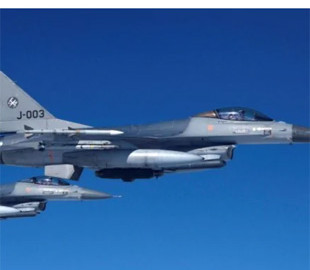
The new EW system will be able to independently recognize threats, analyze previously unfamiliar signals and respond to them faster and more accurately than a human.
The US Air Force commissioned the Southwest Research Institute (SwRI ) to develop a new “cognitive” system of electronic warfare (EW). Scientists will have to create AI algorithms that will help to detect and respond to unknown enemy radar threats in real time faster, reports Interesting Engineering.
The new EW system will be able to “think” independently of the crew, guaranteeing the safety of the aircraft in combat situations. According to the developers' idea, the system will analyze the environment and signals coming from various equipment with the reliability inherent in a person, but with higher accuracy and shorter response time.
Conventional electronic warfare procedures require intelligence gathering before a fighter enters certain areas. In such cases, pilots are given data on the potential of the enemy they may encounter. This information is then pre-loaded into the aircraft's electronic warfare system. And after that, the system notifies the pilots when it detects threats and, if necessary, automatically protects the aircraft. This tracking method allows you to detect familiar threat signals, but it is unable to identify unknown threats. This is where the new WB will be able to change the rules of the game.
SwRI engineers are working on a more powerful, faster, and more accurate tool to protect the military and improve their capabilities and those of allies.
“In the past, we relied on a signal library to recognize and compare familiar signals. This library &mdash ; the limit of the information we have. Thanks to cognitive EW and the use of machine learning, we will be able to instantly identify new signals that are not yet in the library,” — explained SwRI research engineer Damon Plyler, who is part of the development team.
SwRI engineers are developing an autonomous EW system using a two-stage approach. At the first stage, they use the processes of artificial intelligence and machine learning to identify specific features of threatening radar signals. These features are then used in a second step to group millions of pulses, revealing how dangerous or vulnerable the signals are. Developers also hope to apply neuromorphic computing systems that use impulse neural networks to mimic the way the human brain stores “memories,” making processing faster, more accurate, and more efficient.
According to Dr. Stephen Harbor of SwRI, who takes participation in the development, implementation of neuromorphic in the equipment, which will be used for the first time in an operational combat environment, will allow to be significantly ahead of the adversaries. “As far as we know, we are the first in the world to do this,” — he added.
It should be noted that the amount of the contract concluded between the US Air Force and the Southwest Research Institute is 6.4 million US dollars.

